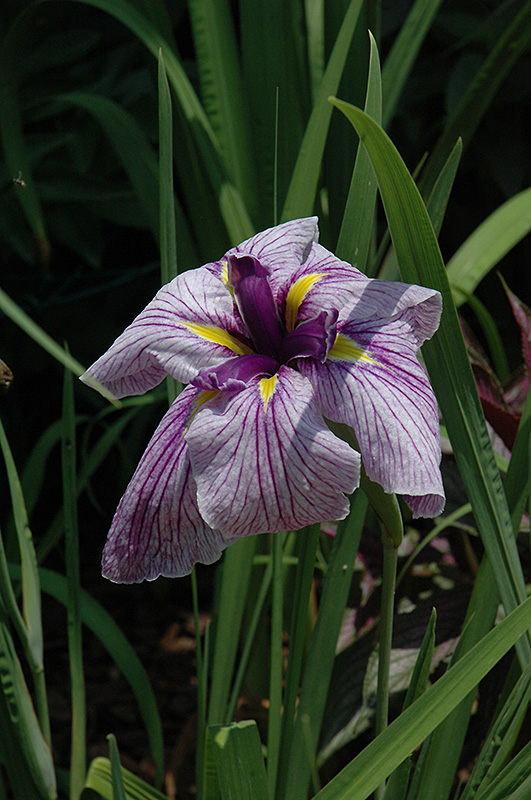Digging deeperPlant Library
Plant Height: 24 inches
Flower Height: 3 feet
Spacing: 18 inches
Sunlight:
![]()
Hardiness Zone: 4
Group/Class: Japanese Water
Description:
This iris has very high water needs and doesn't like to dry out
Ornamental Features
Japanese Water Iris features showy white flag-like flowers with purple overtones and yellow throats at the ends of the stems from mid spring to early summer. The flowers are excellent for cutting. Its attractive sword-like leaves remain bluish-green in color throughout the season.
Landscape Attributes
Japanese Water Iris is an herbaceous perennial with tall flower stalks held atop a low mound of foliage. Its medium texture blends into the garden, but can always be balanced by a couple of finer or coarser plants for an effective composition.
This is a relatively low maintenance plant, and should be cut back in late fall in preparation for winter. Deer don't particularly care for this plant and will usually leave it alone in favor of tastier treats. It has no significant negative characteristics.
Japanese Water Iris is recommended for the following landscape applications;
- Mass Planting
- General Garden Use
- Bog Gardens
Planting & Growing
Japanese Water Iris will grow to be about 24 inches tall at maturity extending to 3 feet tall with the flowers, with a spread of 24 inches. When grown in masses or used as a bedding plant, individual plants should be spaced approximately 18 inches apart. Its foliage tends to remain dense right to the ground, not requiring facer plants in front. It grows at a medium rate, and under ideal conditions can be expected to live for approximately 10 years. As an herbaceous perennial, this plant will usually die back to the crown each winter, and will regrow from the base each spring. Be careful not to disturb the crown in late winter when it may not be readily seen!
This plant should only be grown in full sunlight. It is quite adaptable, prefering to grow in average to wet conditions, and will even tolerate some standing water. It is not particular as to soil type or pH. It is somewhat tolerant of urban pollution. This species is not originally from North America. It can be propagated by division.
A NetPS Plant Finder tool
This Plant Library is for informational purposes only. We may or may not carry the items listed. During many times of the year, we may carry many more plants in our store than are listed in the Plant Library. Please contact us directly at 303-690-4722 or visit our store for current availability and for assistance.
